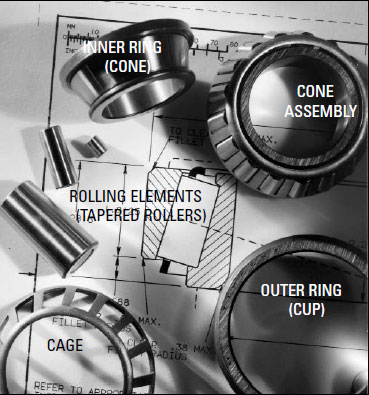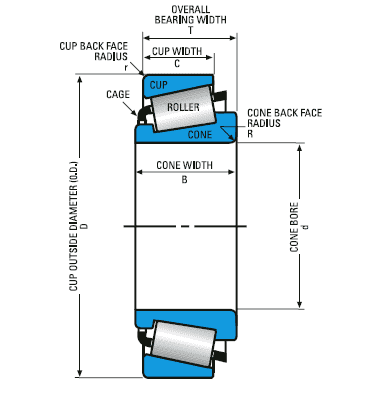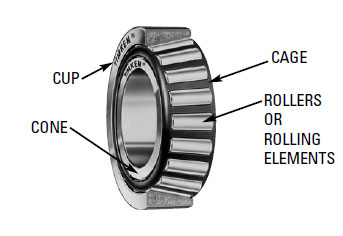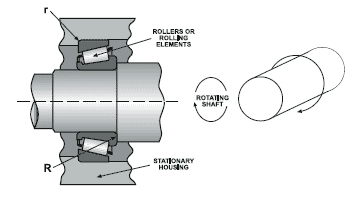
Considering the performance demands placed on TIMKEN tapered roller bearings, it’s rather amazing how simple the basic design really is. Timken tapered roller bearings minimize friction because of the interrelationship of the bearing’s four basic parts:
- The inner ring, or cone, is mounted onto the shaft.
- The outer ring, or cup, sits in the housing (hub).
- The tapered rollers, or rolling elements, allow relative motion between the cone and cup thus minimizing friction between the two.
- The cage, or separator, spaces and holds the rolling elements in the proper position.
- The races are the surfaces on the cup and cone where the rolling elements make contact.

TIMKEN tapered roller bearing’s most important dimensions are:
- The outside diameter of the outer ring, or cup, is known as the O.D. (D). The other basic dimension of this part is the cup width (C). Both are important for fitting the TIMKEN bearing onto the housing.
- The inside diameter of the inner ring, or cone is called the bore (d). This diameter must be correct in order to fit the bearing onto the shaft. The other basic dimension of this part is the cone width (B).
- When cup and cone are mated (including rollers and cage), the overall dimension is called the overall bearing width (T).
TIMKEN bearing components or assemblies must be in alignment. Their fit onto a shaft or within a housing must be square or in alignment by checking:
- The maximum shaft radius (R), which allows the cone backface to make contact with the shoulder of the shaft.
- The maximum housing radius (r), which allows the cup backface to make contact with the shoulder of the housing.



